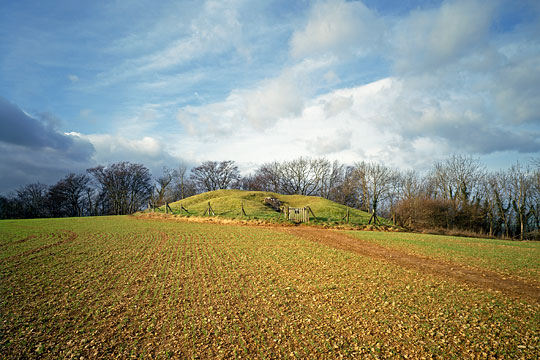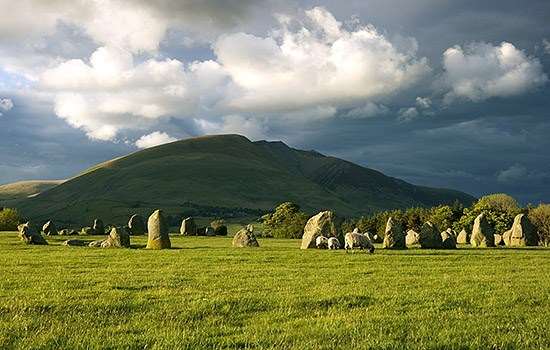History of Uley Long Barrow
Uley Long Barrow (known locally as Hetty Pegler’s Tump after Hester Pegler who owned the land in the 17th century) is a Neolithic burial mound, at least 5,000 years old and impressively sited overlooking the Severn Valley.

Between 15 and 20 skeletons have been recovered from the burial mound over the years, but we know little about the subsequent history of these finds. Two skulls went to Guy’s Hospital in London, but it is said that most of the bones were reburied in Uley churchyard.
Despite its apparently good condition, Uley Barrow has suffered considerably from vandalism and casual excavation. Coins and pieces of broken pot found inside the barrow indicate that it was opened in Roman times. It was probably broken into again in the Middle Ages and damaged further in the 19th century.
The barrow as seen today is largely the result of the excavation and reconstruction undertaken by Dr John Thurnham in 1854 and subsequent repairs in 1871, 1891 and 1906.
Description
The barrow is 120 feet (37 metres) long and 10 feet (3 metres) wide. It is of the ‘transepted’ type – that is, its cruciform plan resembles that of a church with two pairs of chambers opening out of a central passage. The central passageway leads to an end chamber and two side chambers on the left or south side.
The north passage wall is a conjectural reconstruction but is known to have fronted two matching northern chambers, one of which was destroyed in 1821 by workmen seeking stone. It is one of the best surviving of the Cotswold–Severn group of barrows, and one of the most atmospheric.
Further Reading
Grinsell, LV, Hetty Pegler’s Tump, Uley, Gloucestershire (London, 1970)


